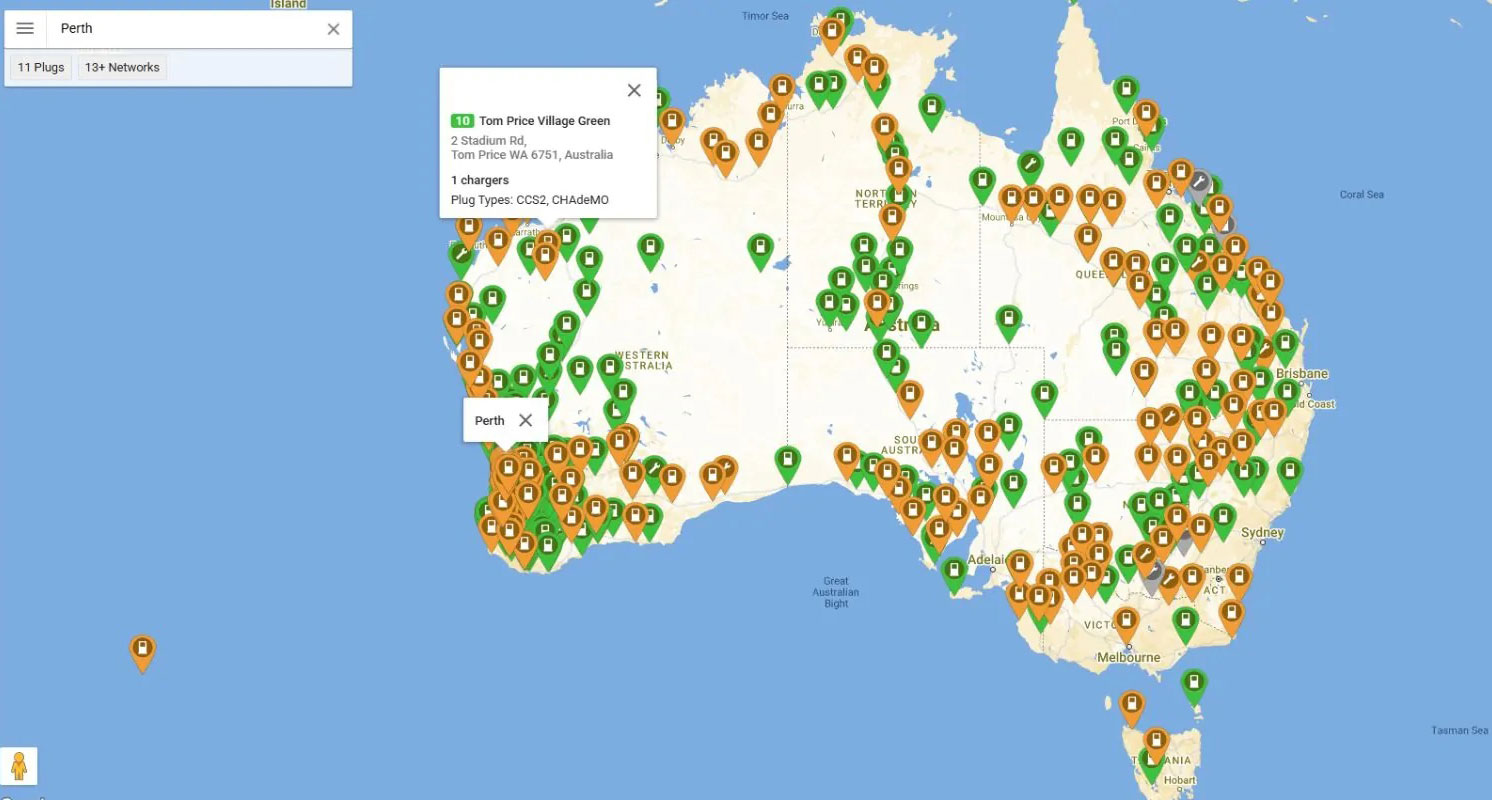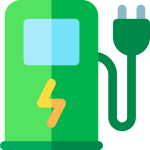
The electric vehicle revolution is well underway in Australia, moving EVs beyond the realm of city commuting and into the domain of long-haul road trips. While home charging remains the most cost-effective and convenient way to replenish your battery, confidently navigating Australia’s vast distances requires an intimate understanding of the public charging landscape.
This guide maps out the major public networks, demystifies the different types of chargers, breaks down the associated costs, and provides the essential tools to make your next EV road trip simple and stress-free.
The Big Four: Mapping Australia’s Major Public Networks
As the EV population grows, so too does the network infrastructure to support it. Several key players are building out the critical arteries of Australia’s electric highways. Understanding who they are and what they offer is the first step to becoming a savvy EV driver.
1. Chargefox: The Network of Networks
Chargefox stands out as Australia’s largest and fastest-growing charging network. Crucially, it acts as a “network of networks,” aggregating chargers owned by various partners (including the major motoring clubs like NRMA, RACV, etc.) into a single, unified platform.
- Network Type: A mix of DC Ultra-Rapid (up to 350kW) and Fast (50kW) chargers, plus numerous AC options.
- Key Advantage: Unmatched reach and density, particularly along major interstate routes. The platform integrates thousands of partner chargers, making it a reliable staple for almost any journey.
- Access: Primarily via the Chargefox mobile app, which is used to locate, activate, and pay for charging sessions.
2. Evie Networks: Powering the Future of Travel
Evie Networks is focused on delivering high-powered charging solutions in metropolitan areas and along key regional corridors. They pride themselves on using 100% renewable energy for their fast charging sites, appealing to environmentally conscious drivers.
- Network Type: High-powered DC Fast and Ultra-Rapid chargers (50kW up to 350kW).
- Key Advantage: A strong focus on reliability and the use of green energy. Their network is expanding rapidly, often partnering with large commercial sites like shopping centres.
- Access: Via the Evie mobile app, with many sites offering an “Autocharge” feature where the charger recognises and bills the vehicle automatically.
3. AmpCharge: The Petrol Station Transition
Backed by fuel giant Ampol, AmpCharge is leveraging existing infrastructure by rolling out DC Fast Chargers at service station sites. This strategy is critical for mainstream adoption, as it places charging in familiar, convenient locations that often include amenities.
- Network Type: DC Fast Chargers, typically 150kW.
- Key Advantage: Seamless integration into existing petrol and convenience station networks, providing a high level of driver amenity and accessibility.
- Access: Primarily via the AmpCharge mobile app.
4. Tesla Superchargers: The Gold Standard (Now Open to All)
Once exclusive to Tesla vehicles, many Tesla Supercharger sites are now open to all EV makes. They are renowned for their high reliability and charging speeds.
- Network Type: High-powered DC chargers, often 120kW to 250kW.
- Key Advantage: Extremely reliable, well-maintained, and often placed strategically for long-distance travel. The user experience is famously seamless.
- Access: Tesla owners simply plug in. Non-Tesla owners can access the chargers via the Tesla app, though they may pay a higher rate unless they purchase a monthly subscription.
Demystifying the Charge: AC vs. DC Fast Charging
One of the most common points of confusion for new EV owners is the difference between charger types. Knowing the difference is key to planning your road trip stops effectively.
AC Charging: The Destination Top-Up
- What it is: Alternating Current charging. The charger itself is simple, as the power conversion from AC to the DC power required by the battery happens inside the car using the vehicle’s onboard charger.
- Speed: Slow to moderate (typically 7kW to 22kW).
- Best For: Destination Charging. This is ideal for overnight stays at hotels, or extended stops at shopping centres, workplaces, or friends’ houses. It takes several hours to replenish a significant portion of the battery.
- Cost: Generally, the cheapest public option, sometimes even free, but you pay for time and convenience.
DC Fast Charging: The Road Trip Refuel
- What it is: Direct Current charging. The bulky and powerful converter is inside the charging station, bypassing the car’s slower onboard charger to deliver DC power directly to the battery.
- Speed: Fast to Ultra-Rapid (typically 50kW up to 350kW).
- Best For: Road Trip Charging. This is your “refuelling” stop. A DC Fast Charger can top up your battery from 10% to 80% in as little as 20 to 40 minutes, depending on the car and the charger’s speed.
- Cost: The most expensive charging option, reflecting the high power output and infrastructure cost.
Show Me the Money: Costs Per kWh
Public charging costs are generally calculated per kilowatt-hour (kWh), similar to how you pay for electricity at home, though some networks also use time-based or connection fees. Prices fluctuate based on network, location, and speed, but here is a typical range for DC fast charging:
| Charger Type | Typical Cost Range (per kWh) | Comparison |
| AC Charging | $0.25−$0.50 (often time-based or free) | Cheaper than a coffee per hour |
| DC Fast Charging (50kW) | $0.50−$0.70 | Mid-range public charging |
| DC Ultra-Rapid (150kW-350kW) | $0.60−$0.90+ | Premium speed, highest cost |
Crucial Insight: While DC Fast Charging is significantly more expensive than charging at home (where off-peak rates can be as low as $0.08−$0.15 per kWh), it remains, on average, cheaper than refuelling a comparable petrol car for the equivalent distance. You are paying a premium for speed and convenience on the go.
Key Takeaway: Simplify Your Journey with the Right Apps
The single most important lesson for any EV driver on a road trip is this: You do not need to memorise every network or download twenty different apps.
The charging landscape is fragmented, but powerful tools exist to unify your search:
PlugShare: Your Road Trip Command Centre
PlugShare is the essential, must-have app for every EV driver in Australia. It functions as a comprehensive, crowdsourced map of charging stations from all networks (Chargefox, Evie, AmpCharge, Tesla, independent chargers, and even private chargers).
How it Makes Road Trips Simple and Stress-Free:
- Universal Map: See every charging point in one place, regardless of the network that owns it.
- User Check-Ins: This is the killer feature. Drivers leave comments and “check-ins” about the charger’s status. You can instantly see if a charger is out of order, how many cars are waiting, or if it is currently experiencing issues—information the network’s own app may not always provide in real-time.
- Filtering: Filter the map instantly by the type of plug your car uses (CCS, CHAdeMO, Type 2), the speed you need (50kW, 350kW), and even by the amenities nearby (restaurants, restrooms).
- Trip Planner: Use the built-in trip planner to map out a multi-day journey, ensuring you have enough range to reach the next viable charging stop.
By using an aggregator app like PlugShare for locating and vetting your stops, you can reduce range anxiety and avoid arriving at a non-functional charger. You will only need the individual network apps (Chargefox, Evie, etc.) for the final step of activating and paying for the charge.
Conclusion
The Australian public charging network is evolving at a remarkable pace, driven by major players dedicated to building high-speed infrastructure across the continent. Your confidence on the road hinges on three core skills: knowing the difference between AC and DC charging (when to stop for an hour vs. when to stop overnight), understanding that high speed costs more per kWh, and most importantly, mastering a universal charging locator app like PlugShare.
With this guide in hand, you are now equipped to look “beyond the garage” and embrace the freedom of electric road trips, ensuring your journey is as simple, predictable, and stress-free as possible. The electric highway is open—all you need to do is plug in.
FAQs
How do I know which charger connector my car uses?
Most modern non-Tesla EVs in Australia use CCS2 for DC fast charging and Type 2 for AC charging. Some earlier models (notably older Nissan Leafs) use CHAdeMO. Tesla vehicles use Tesla connectors and increasingly NACS internationally; adapters are available for cross-compatibility. Check your vehicle manual and carry any required adapters where feasible.
Are Tesla Superchargers available to non-Tesla vehicles?
Many Tesla Supercharger sites in Australia have been enabled for non-Tesla vehicles via the Tesla app. Availability and pricing can vary by location, and some stations may still prioritise vehicles from the Tesla ecosystem. Always check the Tesla app and site information before relying on a Supercharger.
What’s the best app for planning a long EV trip in Australia?
PlugShare is the most widely used aggregator for locating and vetting chargers. For route planning with range calculations, A Better Routeplanner (ABRP) pairs well with PlugShare. Use the native apps of networks you plan to use for session initiation and payment.
Is charging at a public DC fast charger bad for battery health?
Occasional fast charging has a small, manageable impact on battery longevity. Battery manufacturers generally recommend using fast charging when needed (road trips) but relying on slower AC charging for daily top-ups when possible. Avoid frequent, continuous ultra-rapid charging if you want to maximise long-term battery health.
How much should I budget for public charging on a road trip?
Costs vary by network and charger speed. Expect to pay roughly $0.45-$0.80 per kWh for typical DC fast charging and $0.20-$0.45 per kWh for public AC charging. Many variables-your vehicle’s efficiency, charging strategy, and whether you use membership discounts-will affect your total cost. Overall, public charging will usually be cheaper than refuelling an equivalent petrol vehicle for the same distance.
What should I do if a charger is out of order when I arrive?
Check PlugShare or the network app for the latest status and user comments. If the charger is reported out of order, identify an alternative nearby and notify the network operator through their app or contact line. User check-ins on PlugShare can be especially helpful to confirm faults and expected repair timelines.
About EV Evolution
EV Evolution is the leading online platform dedicated to Australian electric vehicle owners and enthusiasts. We foster a vibrant community, delivering essential EV news and insights, and enhancing user engagement through our innovative, AI-powered chatbot for dynamic discussions. Our mission is to empower Australian electric vehicle owners and enthusiasts by fostering a vibrant, AI-driven online community that connects, informs, and advances the nation’s electric vehicle landscape




